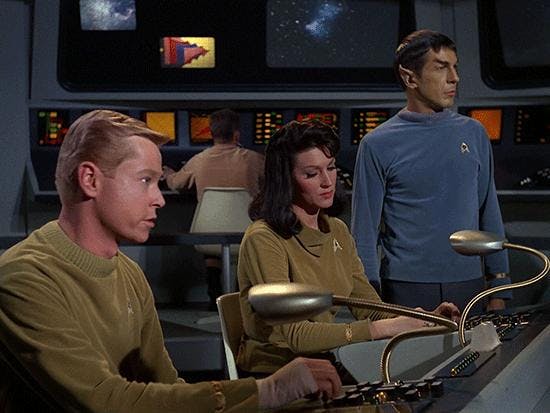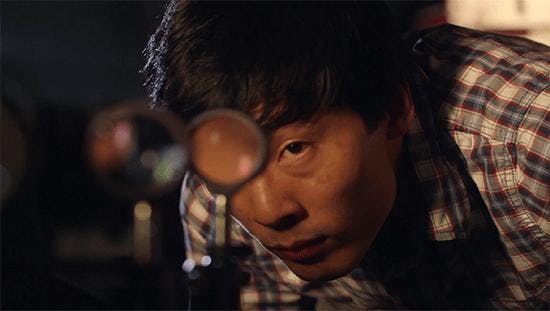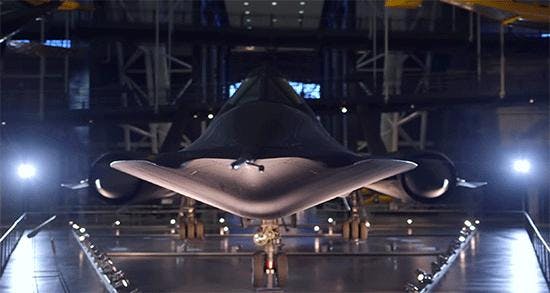Published Aug 28, 2016
Preview: Building Star Trek
Preview: Building Star Trek

The Smithsonian Channel documentary Building Star Trek is set to premiere on September 4 at 8p.m. ET/PT. The program will feature a star-studded lineup of astronauts, engineers, writers, innovators and Star Trek actors who'll celebrate to the 50th anniversary of the show that inspired the space age. Among the participants are Simon Pegg, Karl Urban, Professor John Howell of the University of Rochester; Dr. Margaret Weitekamp, Curator at the Smithsonian’s National Air and Space Museum; Dr. Sonny Kohli, Team Leader of Cloud DX, one of the finalists for the Qualcomm Tricorder XPRIZE; David Grier, Professor of Physics and Director of the Center for Soft Matter Research at New York University, who is developing a real-life Tractor Beam; and Dr. Rob Afzal, Lockheed Martin Senior Fellow Laser Sensor and Systems, who is working to harness the power of lasers.

StarTrek.com recently spoke with Elliot Halpern of yap films, Executive Producer of Building Star Trek. Halpern discussed his personal appreciation of Star Trek and previewed what viewers will see on September 4 when they check out the documentary. Here's what he had to say:
First, how deep does your own love of Star Trek run?
I was nine years old and starting Grade 6, when Star Trek: The Original Seriespremiered in September 1966. One of my friends was the first on our block to have this amazing invention: a color TV. So my friends and I would go to his house and, rapt, watch Star Trek together. It was the very first show I ever saw in color, which seemed appropriate because it was projecting an incredible new world. I was a huge sci-fi and comic book fan and the series blew me away. I spent each week waiting for the next episode. It was the heady days of the Apollo program and the idea of exploring the universe, of the last frontier, really captured my imagination. Inspired by the show, for my birthday that year, I got my first telescope. I dreamed of going to the stars one day, but for the time being I was totally enthralled by observing them and by exploring them through Star Trek. And while I was interested in all the subsequent series and films, TOS is still for me “Star Trek." You never get over your first love!
How did you get involved with Building Star Trek?
In the fall of 2014, with the 50th anniversary of TOS on the horizon, it was an amazing opportunity to pay homage to a beloved institution that personally meant so much to me. Working with Smithsonian Channel was a great fit.

Give audiences a sense of what they will see with Building Star Trek…
We didn’t want to make a nostalgic looking-back kind of film. We wanted to do something very Star Trek: look into the future. So the idea was to take all of Star Trek’s amazing science and technology — as embodied in all of its cool props, like the phaser and the tricorder — and investigate how that tech is still influencing cutting-edge developments of today. Passionate scientists inspired by Star Trek are right now creating real-life tractor beams, competing for the Tricorder Prize, and making missile-hunting phasers and claoking devices, among other cool stuff. We also follow the Smithsonian National Air and Space Museum’s conservationists as they meticulously restore the original 11-foot model of the Enterprise used in TOS. There is one other major element of the show. The EMP Museum in Seattle created an immersive exhibit of the TOS bridge. We follow them as they scour the world for all of the TOS props and sets, everything from a phaser and a Tribble to the captain’s chair and console.
What elements of the Trek phenomenon personally fascinate you the most — and why?
Its endurance; the cultural and moral values it champions, and the science and technology it has and continues to inspire. At the end of the day, the things that have really stayed with me are the idealized Planet Earth — everyone working together— and the ethical/philosophical questions that the series regularly posed.

We'll hear from scientists and actors and writers, etc. How tough or easy was it to wrangle some of the people, and once you got them, what kinds of contributions did they make to the project? Please give us a few examples...
The folks featured in the special were very gracious about giving us some of their time. The writers D.C. Fontana and David Gerrold gave us amazing perspectives on what is was like to work on the series, the creative challenges, the ambitions, and the audience response; for example, that judging by the fan mail from female viewers, Leonard Nimoy was the show’s stealth sex symbol, not William Shatner. Current stars Simon Pegg and Karl Urban gave us this great, loving look back at TOS to discover what its appeal was — with humor and intelligence. And Nichelle Nichols revealed for the first time on camera why she really didn’t think the groundbreaking kiss between Uhura and Kirk was such a big deal. But you’ll have to watch the film to find out.
From inception to completion, how long have you been involved in Building Star Trek, and what were your day-to-day responsibilities on the project?
I think we first started talking with Smithsonian Channel in the fall of 2014 and we delivered July 2016, so I was involved with this for over a year and a half. As an executive producer and creative director of yap films inc., I had oversight over all aspects of development and production.

What are some of the discoveries/revelations made in Building Star Trek that most surprised you, and that you think will most surprise viewers or resonate with them?
On a personal note: Early on in the process of putting the film together, Dr. Margaret Weitekamp, curator at the Smithsonian’s National Air and Space Museum, invited a group of individuals with a special expertise in all things Star Trek to provide advice on the conservation of the original 11-foot model of the Enterprise. We had an opportunity to film that meeting. I was very excited about actually seeing the model first-hand. But I didn’t expect to have such a strong emotional reaction to being in its presence. It gave me the chills. It blew me away. I thought back to the nine-year-old boy I was when I first watched the series. I couldn’t have imagined then that someday — 50 years into the future -- I would actually be making a film about my favorite series and find myself only inches away from the iconic model. It was really amazing.
It’s these kinds of experiences that keep me excited about making documentaries. I hope viewers will have the same reaction to seeing these beloved objects close-up, whether it’s the enterprise or the captain’s chair or the console. I think the whole story about what happened to the set of the Enterprise after the series went off the air will really be of interest to viewers. As well, the fact that 50 years later, the series and its vision of the future has inspired so many of the world’s leading scientists to boldly go into a future where some of Star Trek’s most fanciful inventions are becoming a reality.
Building Star Trek will premiere on-air and stream for free on www.smithsonianchannel.com on September 4, 8PM ET/PT.
